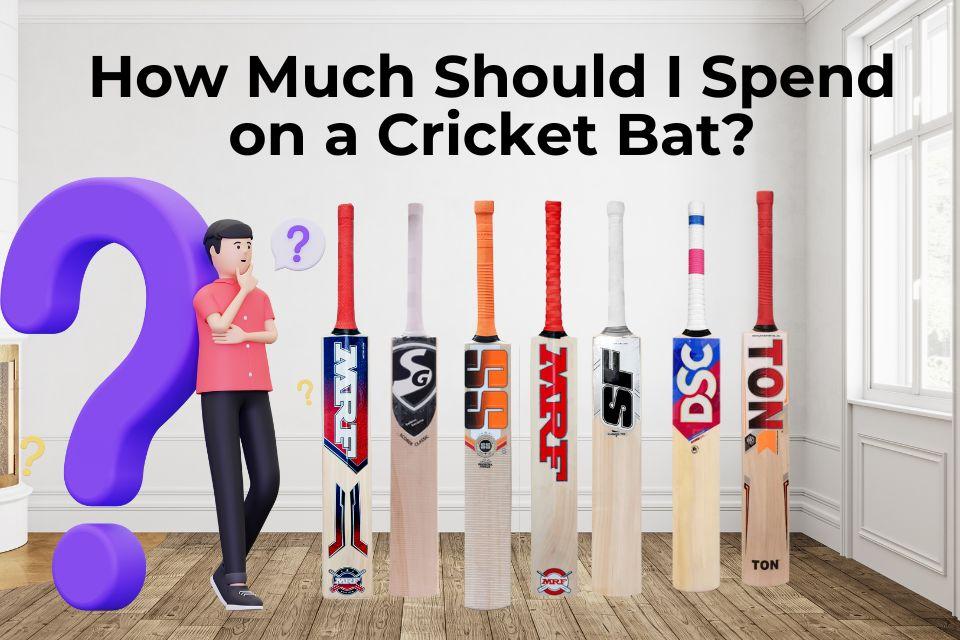


Choosing a cricket bat is an exciting yet confusing task. With so many options available—ranging from budget-friendly Kashmir willow bats to premium English willow models—players often wonder: how much should I really spend on a cricket bat?
If you’re planning to buy cricket bat online or explore new gear, this guide will help you understand how much to invest, what factors matter most, and how to get the best value for your money.
Type of Willow
English Willow:
Used in professional cricket.
Offers better performance, lighter pickup, and excellent ping.
Price Range: ₹8,000 – ₹40,000+ depending on grade.
Kashmir Willow:
More affordable, durable, and perfect for beginners and casual players.
Slightly heavier and less responsive than English willow.
Price Range: ₹2,000 – ₹7,000.
If you’re new to the game, a Kashmir willow bat is a smart buy. But if you’re serious about playing at higher levels, go for English willow.
Skill Level
Beginners / Casual Players: ₹2,000 – ₹5,000 (Kashmir Willow).
Intermediate Players (Club Level): ₹6,000 – ₹15,000 (Lower-Grade English Willow).
Advanced / Professional Players: ₹20,000 – ₹40,000+ (High-Grade English Willow).
Brand and Quality
Trusted brands like SG, SS, MRF, DSC, GM, and Kookaburra may cost more, but they guarantee authentic willow, durability, and professional performance.
Bat Size and Weight
Junior sizes cost less (₹1,500 – ₹4,000).
Full-size bats cost more depending on willow and quality.
Custom weights or handles (oval, round) may also add to the price.
Here’s a simple breakdown:
School / Beginners: Around ₹2,000 – ₹5,000 (Kashmir willow).
College / Club Players: ₹6,000 – ₹15,000 (entry-level English willow).
Serious League / Professional Players: ₹20,000 – ₹40,000+ (premium English willow).
Tip: Spend based on your level of play and frequency. Don’t overspend if you’re just starting, but don’t underinvest if you’re serious about performance.
When you buy cricket accessories, remember that your bat isn’t the only gear you’ll need. Invest in:
Bat grips for comfort.
Toe guards and scuff sheets to protect your bat.
Kit bags for safe storage.
Protective gear (pads, gloves, helmets).
These small accessories can extend the life of your bat and improve your overall game experience.
Spending wisely on a bat also means maintaining it properly.
Knock-In Your Bat:
Use a wooden mallet or old ball to compress fibers before match play (unless it’s labeled “ready-to-play”).
Oiling:
Apply raw linseed oil lightly on the face and edges of English willow bats.
Avoid over-oiling or oiling the splice.
Use Protective Sheets:
Add an anti-scuff sheet to reduce surface cracks.
Toe Protection:
Fit a toe guard to avoid moisture damage and cracks.
Storage:
Store in a cool, dry place away from heat and moisture.
Proper care ensures your bat lasts longer, making your investment worthwhile.
Read More: https://www.sportsgear24x7.com/bat-care-instructions
So, how much should you spend on a cricket bat?
If you’re starting out, a Kashmir willow bat under ₹5,000 is ideal.
If you’re advancing, go for English willow between ₹8,000 – ₹15,000.
If you’re aiming for the professional level, invest in a premium bat above ₹20,000.
No matter what you choose, always buy cricket bat online from trusted sellers and pair it with essential cricket accessories. And remember—maintaining your bat is just as important as buying it.
👉 Ready to upgrade your gear? Explore authentic English willow and Kashmir willow bats, along with the best cricket accessories, at SportsGear24x7.
Q1. Is an expensive bat always better?
Not necessarily. Choose based on your level. Beginners won’t notice much difference between a ₹5,000 bat and a ₹20,000 one.
Q2. How long does an English willow bat last?
With proper care, 1–3 years depending on usage and maintenance.
Q3. Can I use Kashmir willow bats for leather ball cricket?
Yes, but they’re better suited for casual and beginner use. For professional matches, English willow is preferred.
Q4. How often should I oil my bat?
Once every 3–4 months, or when the bat feels dry.
Q5. Should I always knock-in my bat?
Yes—unless your bat is factory “ready-to-play.” Knocking-in extends durability and reduces cracks.